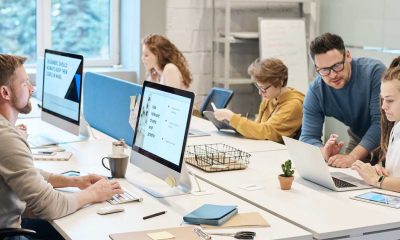Business
These Copywriting Statistics Will Help You Increase Conversions
Published
5 years agoon

The art of copywriting is another skillset every writer wants to master. If you’re writing for a brand, copywriting can arguably increase sales. That’s because excellent copy seeks to achieve a particular goal. Whether it’s conversion, app download, email sign-up, or website traffic, copywriting should be in every marketer’s arsenal. If you don’t believe how effective copywriting is, read until the end for some copywriting statistics to persuade you.
But first, let’s define exactly what copywriting is.
Some people interchangeably use content writing and copywriting. However, both are different. Those compelling headlines on ads, landing pages, and print materials belong under copywriting. Did you know that 80 percent of readers never read past the headline? This is what makes copywriting different. It aims to influence action. It aims to sell, download, or click. On the other hand, content writing aims to educate and foster customer relationships.
If you’re not an expert on both, it makes sense to hire someone who is. Did you know that 74 percent of online users are meticulous about spelling and grammatical structures? Any spelling or grammatical error can turn off prospects before you get your message across. That’s why 64 percent of B2B advertisers hire third-party copywriting services. Copywriting also revolves around succinctness. On top of that, there are other vital factors you must consider when writing a copy that sells.
5 Elements of Copywriting
Copywriting should be short and straightforward. It shouldn’t beat around the bush. However, it must make the readers feel like they’re missing out if they don’t take action. To achieve that, consider these five factors:
1. Know your audience
Doing market research to know your audience more is crucial in copywriting. You can do this in many ways, like surveys, A/B testing, or polls. HubSpot says 17 percent of marketers A/B test their landing pages to increase sales.
Knowing your audience’s age, gender, education, culture, language, and more helps you craft better copy. This also allows you to align with your audience’s vision, principles and resolve their pain points.
2. Focus on benefits
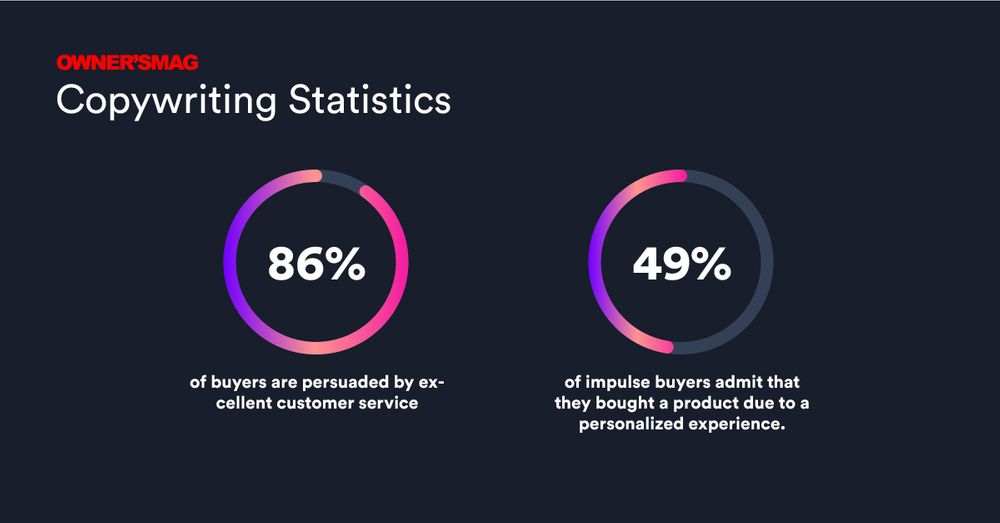
Jot down all your product features, then discover what benefits you can offer to your audience. For instance, if your brand has excellent customer support, showcase that in your ads. Did you know that 86 percent of buyers are persuaded by excellent customer service?
A personalized experience makes consumers feel more special. In fact, 49 percent of impulse buyers admit that they bought a product due to a personalized experience.
3. Create compelling headlines
No matter how visually appealing your ads are, your headlines still play a significant part in getting prospects to read your offers. And if you can’t make them read your offer, then you’ll never drive them to the call to action in the end. On average, eight out of 10 people read the headlines. Unfortunately, only two out of 10 will read the entire copy.
Also, a website’s traffic may vary up to 500 percent based on the headlines alone. To create compelling headlines, here are some tips:
- Write the headline in seven words or less
- Keep it simple
- Let it summarize what the offer is about
- Feature numbers
- Make typography appealing
- Headlines should answer one of the 5 Ws
4. Include a call to action
You can’t expect your copy to convert a lead without a call to action. Every landing page, online ad, or email should include a call to action to make readers take the next action. However, make your call to action captivating. HubSpot says personalized calls to action increase your chance of getting a conversion by 202 percent.
Here are some copywriting statistics and tips on calls to action:
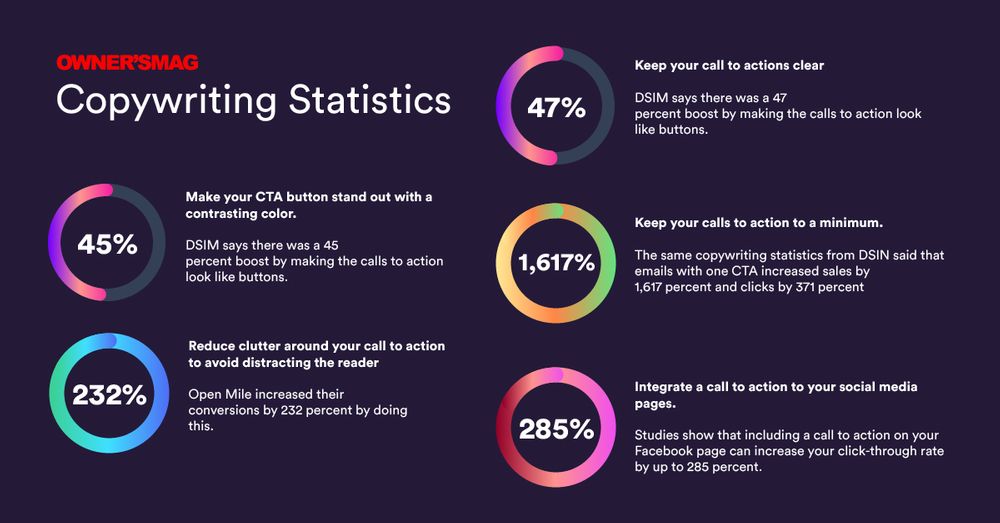
- Make your CTA button stand out with a contrasting color. DSIM says there was a 45 percent boost by making the calls to action look like buttons.
- Reduce clutter around your call to action to avoid distracting the reader. Open Mile increased their conversions by 232 percent by doing this.
- Keep your calls to action clear. DSIM says 47 percent of brands included a clear CTA on their websites that took readers less than three seconds to see.
- Keep your calls to action to a minimum. The same copywriting statistics from DSIM said that emails with one CTA increased sales by 1,617 percent and clicks by 371 percent.
- Integrate a call to action to your social media pages. Studies show that including a call to action on your Facebook page can increase your click-through rate by up to 285 percent.
5. Complement with visuals
Visuals are crucial to your advertising strategies. Indeed, a compelling copy can undeniably cut the mustard, as what these copywriting statistics show. However, visuals can convey better messaging for readers. It also gives your advertisements creative storytelling that can lure users in.
A Venngage study shows that 22 percent of marketers state that design and relevant data were the most significant challenges they faced. Also, 12 percent stated that gearing the content and design to create visually appealing ads is another big challenge. And this is why marketers should entrust the graphic design task to experts like Penji.
Here are some copywriting statistics on graphic design:
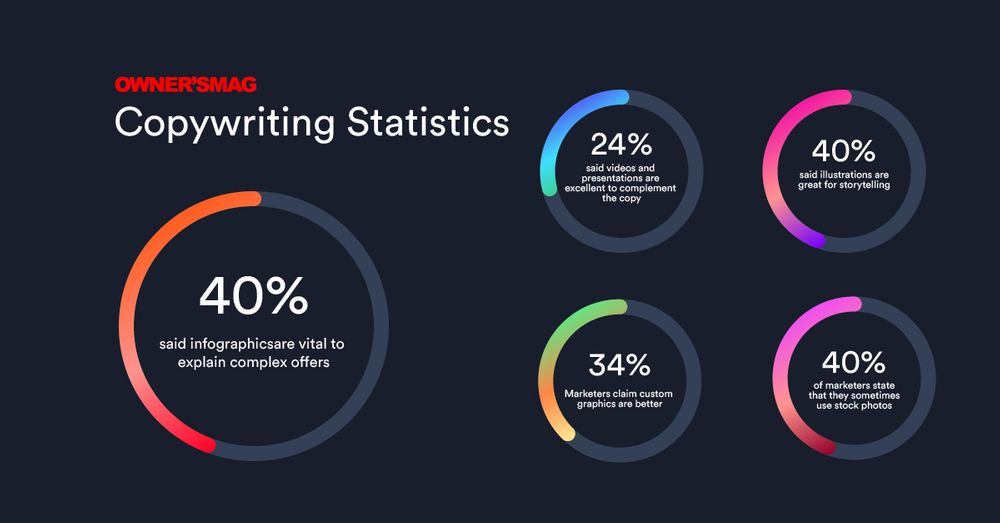
- 40 percent said infographics are vital to explain complex offers
- 24 percent said videos and presentations are excellent to complement the copy
- 40 percent said illustrations are great for storytelling
- 34 percent of marketers claim custom graphics are better
- 40 percent of marketers state that they sometimes use stock photos
Conclusion
When writing copy, write with the users in mind. Tell them your product features and benefits, and show how the benefits will ease their pain points. Then show them how nice it would be if they experience these first-hand. Additionally, instill a feeling of FOMO in all your offers. According to OptinMonster, seven out of 10 millennials experience FOMO or the fear of missing out.
Also, 56 percent of people have a fear of missing out on news and events. If you instill a sense of urgency in your advertisements, especially on social media, you’ll get users to act.
These copywriting statistics should be enough to make you create the most compelling copy on all channels. If you want to outsource your copywriting needs, check out Content Fuel.
You may like
Business
Top 10 Video Marketing Agencies You Must Check Out in 2026
Published
7 hours agoon
December 19, 2025
If you’ve been following the latest marketing trends, you would know that video marketing is popular. Factors like lower costs, the availability of video platforms, and the rise of social media influencers helped change how consumers interact with video content. Read on to learn the best video marketing agency to help you leverage the power of video.
1. Vireo Video
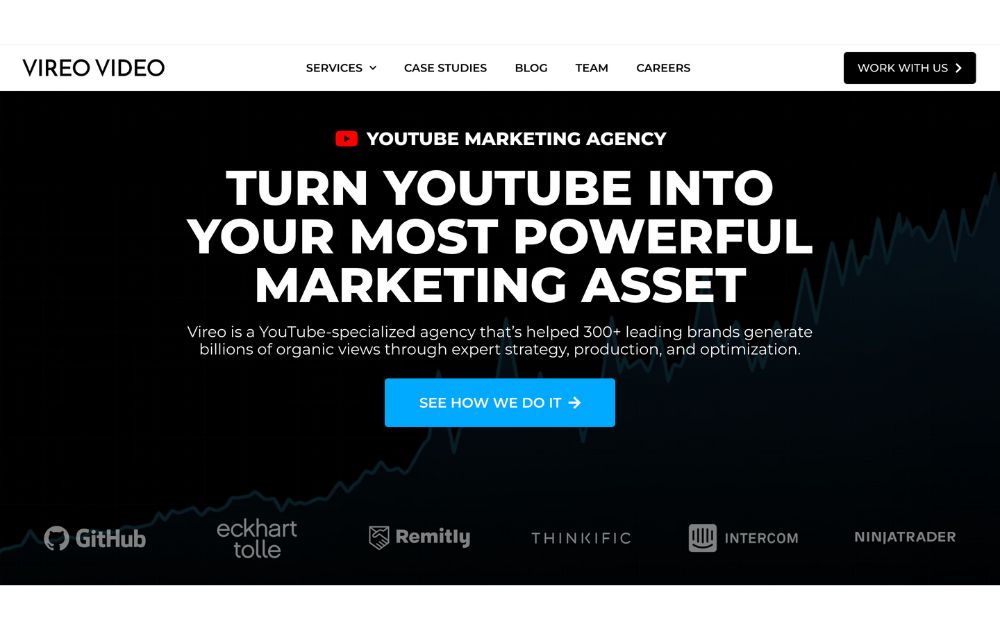
If you need an expert in Youtube marketing, be sure to check the features of Vireo Video. The platform specializes in Youtube marketing and offers various video-related services, such as Youtube content strategy, SEO, and advertising.
Vireo Video is trusted by brands and influencers like bestselling author Eckhart Tolle. Vireo assisted in the optimization of his videos and helped grow his YouTube channel. As a result, his channel has 250 million views and 1.6 million new subscribers.
Key Services:
- Influencer marketing
- Video optimization
- Targeted YouTube advertising placements
- Strategy development
2. NinjaPromo
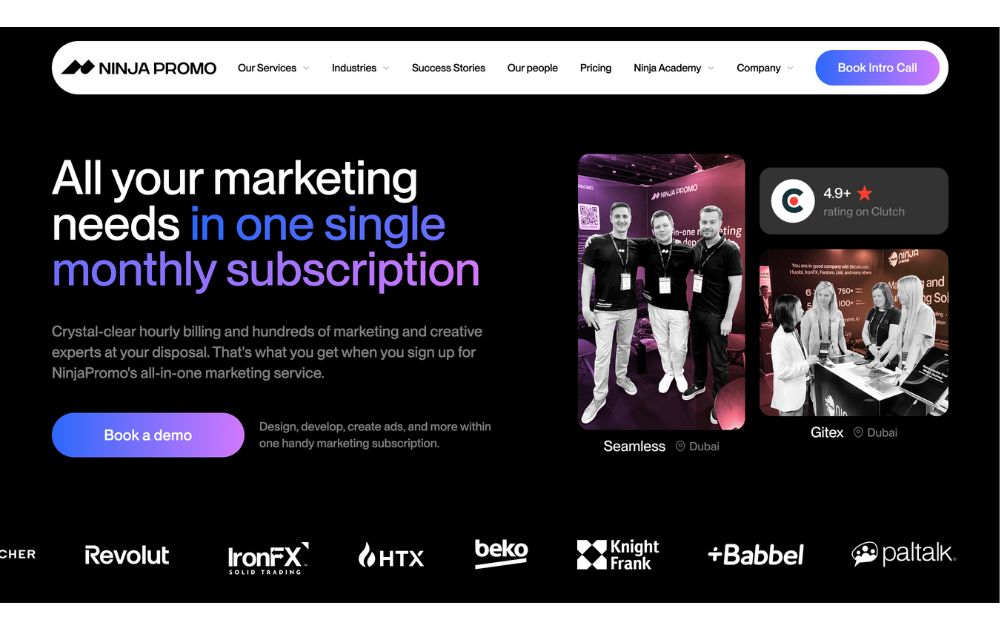
Video marketing is one of the many services offered by the digital marketing agency NinjaPromo. If you’re looking for a perfect partner to assist you in reaching your desired audience quickly, NinjaPromo is one of the best agencies to work with. The company can help you create creative, engaging, and practical videos to promote your brand and increase your online presence.
Key Services:
- Video Production
- Consultation
- SEO optimization
- Explainer videos
- Event and product videos
- Tutorials
3. Moburst
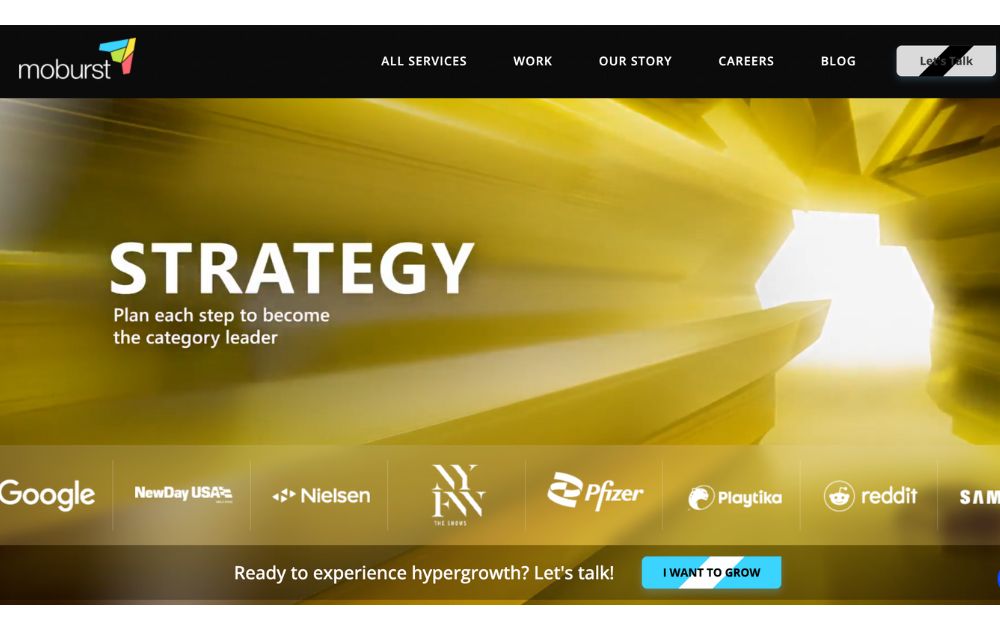
Moburst is a mobile and digital marketing agency that specializes in helping businesses grow their mobile apps. They offer different services to enable enterprises to improve their mobile app performance and increase user engagement. One of its clients is Samsung, which Moburst helped achieve +1,400% growth from downloads to social.
Key Services:
- App Store Optimization
- Video production
- Mobile User Acquisition
- Mobile App Analytics
- Mobile App Design and Development
- Mobile App Retargeting
4. Voy Media
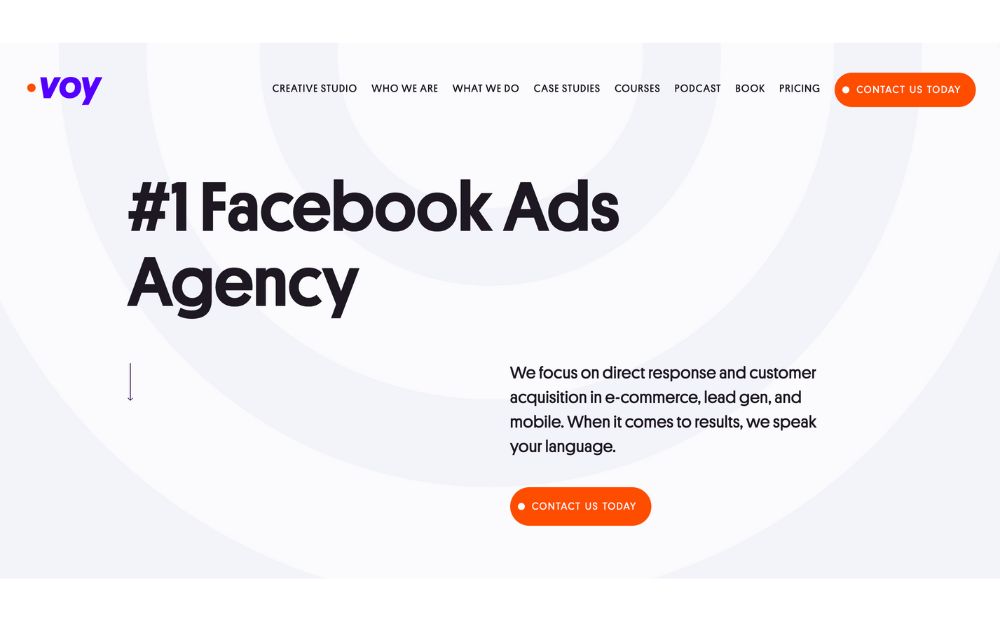
Trusted by big brands like Lacoste, Voy Media is a full-service agency offering various marketing and creative services. Their services are designed to help businesses grow their brand. Likewise, the agency helps them generate leads and increase conversions through social media platforms. Voy Media also ensures its clients receive the necessary support by assigning a dedicated account manager.
Key Services:
- Video editing and production
- Product and lifestyle photography
- Graphic design and illustration
- Full studio production with talent and script
5. Pop Video
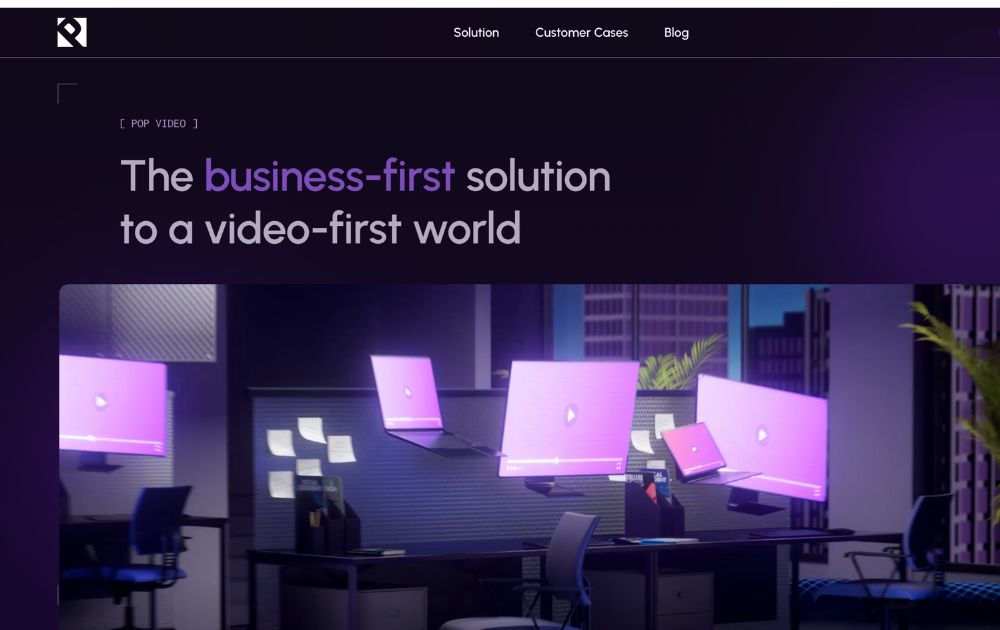
Pop Video was established in 2010 in Houston, Texas. They describe themselves as a business-first solution for a video-first world. Pop Video has a team of visual content creators with a specialization in video production and visual content marketing.
The agency has worked with various clients across different industries, including healthcare, technology, retail, and finance. Some of its notable clients include Microsoft, Adidas, and Coca-Cola.
In addition to its core video production services, Pop Video provides consulting and training services to help businesses develop their video marketing strategies and produce their video content in-house.
Key Services:
- Video Marketing
- Video production
- Animation
- Content creation
- Social media optimization
6. Epipheo
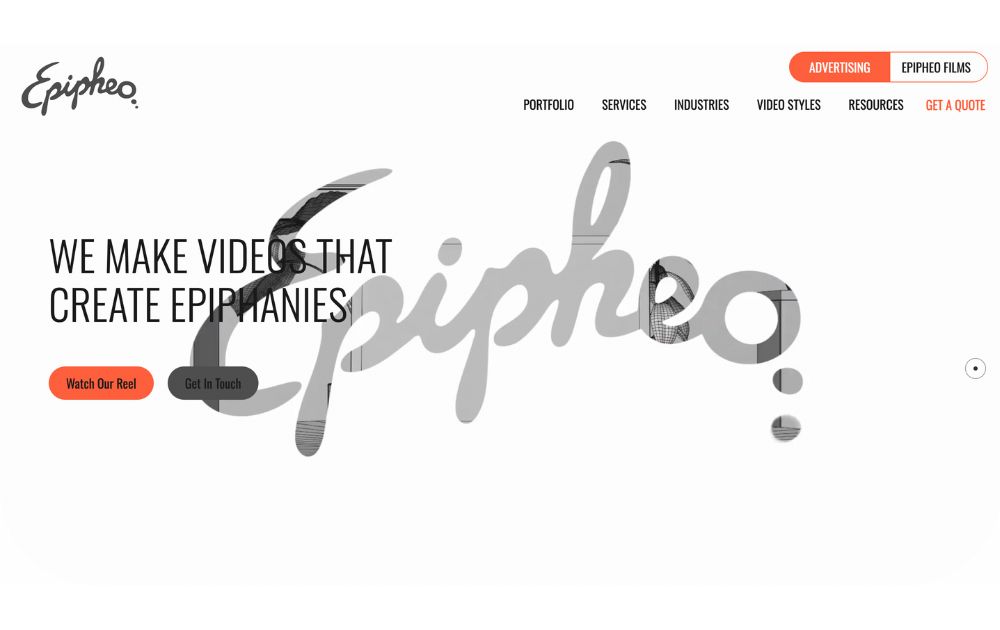
If you need help with educational videos, explore the services of Epipheo. Epipheo is a video marketing agency that creates animated explainer videos and other visual content to assist companies, organizations, and individuals in connecting with their audience effectively.
Key Services:
- Social video ads
- Storytelling testimonial videos
- Animated explainer videos
- Live action videos
- Strategy and consulting
7. Early Light Media
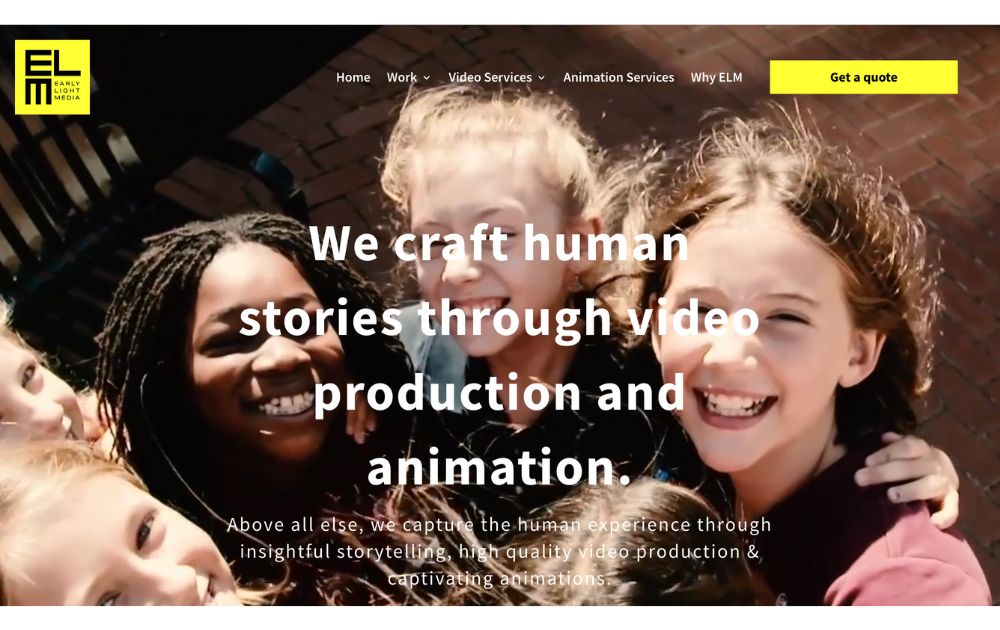
Early Light Video is a full-service video production company that creates high-quality video content for businesses, nonprofits, and individuals. The agency is known for delivering top-notch video content that meets its clients’ needs. It was founded in 2013 by a team of Emmy Award-winning creative directors, with offices in Baltimore and Washington, DC.
Key Services:
- Video production
- Post-production
- Animation
- Voice-over casting
- Music Licensing
8. Indigo Productions
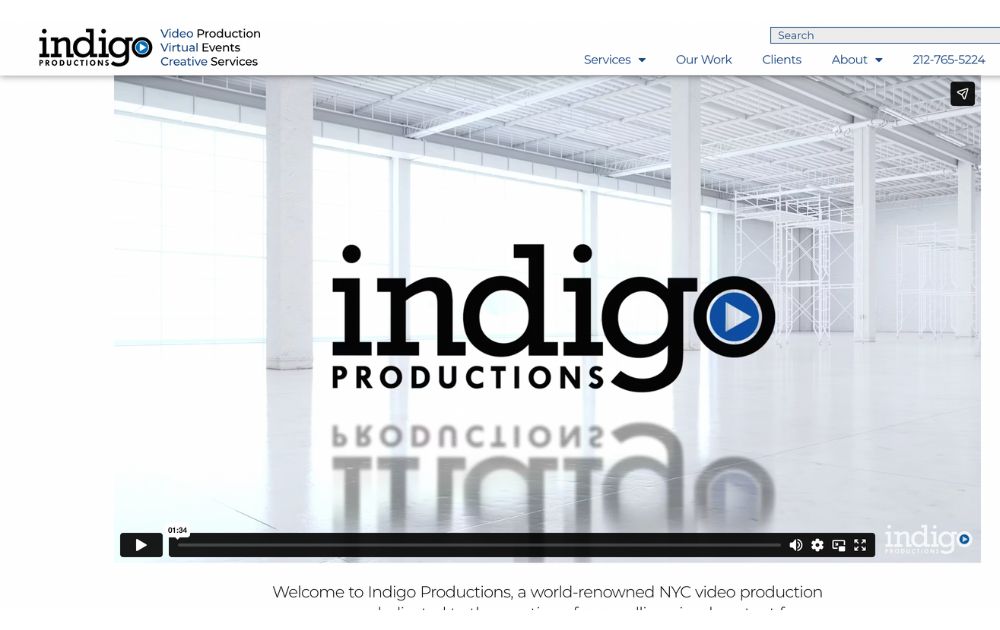
Indigo Productions is a full-service video production company based in New York City. They specialize in creating high-quality videos for corporate clients, advertising agencies, and individuals. Their team of scriptwriters, directors, producers, hair and make-up artists, and location scouts will handle all the logistics.
Key Services:
- Promo videos
- Web commercials
- Music videos
- Movie trailers
- Documentaries
9. LAI Video
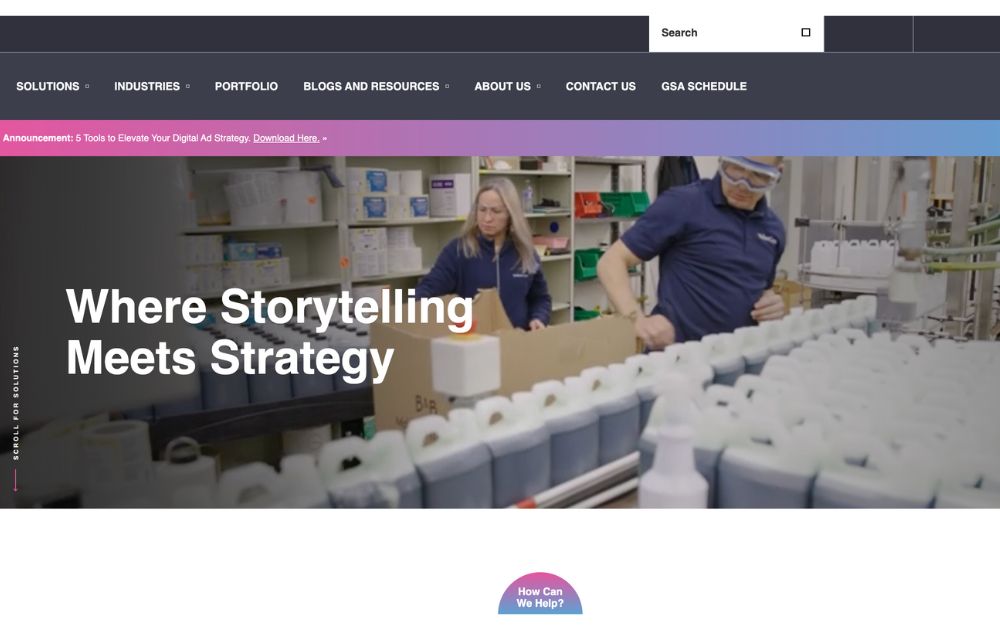
LAI Video is a Washington, DC-based boutique video production company specializing in creating visual stories that inspire and engage audiences. The company was established in 2013 and has become a leading video production agency in the DC metro area.
LAI Video has worked with various clients, including National Geographic, The World Bank, Georgetown University, and The Smithsonian Institution. Their skilled team of filmmakers, animators, editors, and producers works closely with clients to ensure that each video project meets their specific goals and objectives.
Key Services:
- Corporate videos and commercials
- Video communication campaigns
- Branding
- Video animation
- Marketing storytelling
10. SparkHouse
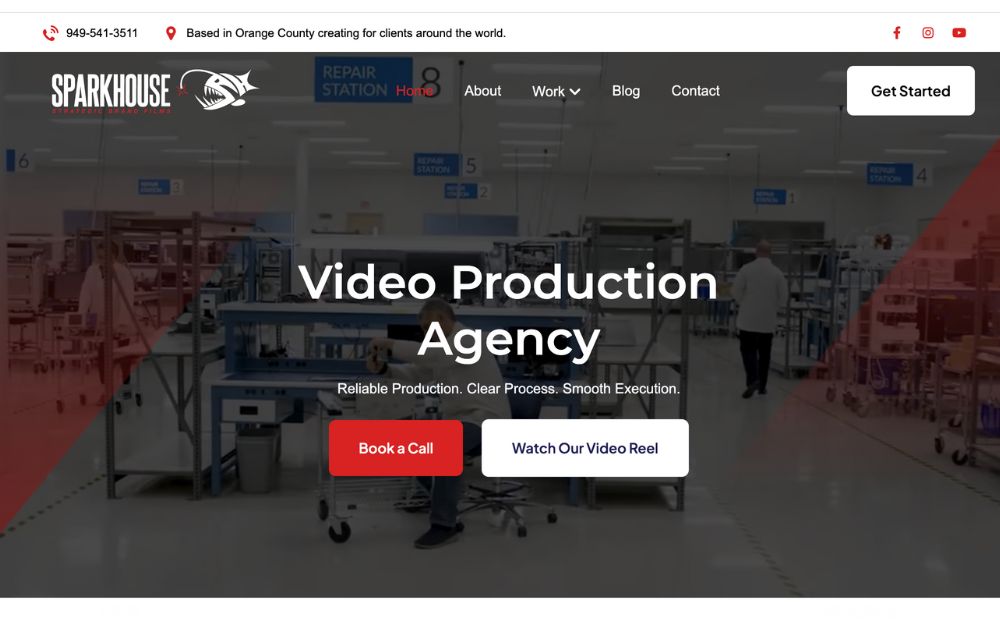
SparkHouse is a video production company based in Minneapolis, Minnesota, specializing in creating high-quality video content for businesses and organizations. The company was founded in 2013 by filmmakers and storytellers passionate about creating visually stunning and emotionally compelling videos.
SparkHouse has worked with various clients, including Target, 3M, Best Buy, and General Mills. Their talented filmmakers, animators, writers, and producers work closely with clients to ensure each video project is customized to their unique needs and objectives.
Key Services:
- Brand Videos
- Corporate Videos
- Animation
- Event Videos
- Social Media Videos
- Documentary Films
Which Types of Videos Do You Get from a Video Marketing Agency?
A video marketing agency typically provides various video types, each with a specific purpose and target audience. Below are the common types of videos you can request from a video marketing agency.
- Brand videos
- Explainer videos
- Corporate videos
- Testimonial videos
- Social media videos
- Live stream videos
- Case studies
- Reviews
- Tutorials
Conclusion
Video marketing is essential for businesses looking to engage their audience, build brand awareness, and drive conversions. That said, the competition will only continue to grow, making working with a reliable video marketing agency more critical than ever.
Featured Image Credit: Photo by fauxels from Pexels

TLDR: Penji is unlimited graphic design for a flat fee; Colab is digital transformation focused on brand storytelling; Jacob Tyler is a full-service brand strategy powerhouse; Micro1 is AI-powered engineering and tech design.
Did you know that California’s creative economy is worth more than $500 billion to the state’s economy? That’s a lot of creative minds at work!
The search for the best design agency in Los Angeles can be quite daunting. After all, 1 in 6 people in L.A. work in a creative field. It’s no surprise there are thousands of candidates that would be an ideal extension of your dream team.
If your business requires a rebrand or continuous graphic design efforts you can rely upon day in and day out, then finding the right design agency will help your business thrive. You need more than just a creator, you need someone to bring your vision to life.
To ease your research, here are the top four contenders as the best graphic design agency in Los Angeles.
1. Penji

The future of design has arrived. Seeking a design service upon demand? Penji is your new graphic design service that acts as an extension of your team.
No hidden costs, no missed deadlines and For a monthly flat-fee subscription service, you will have access to the top 2% of designers in the world with little more than a submission request for us to take it from there!
This is perfect for marketers or agencies seeking cohesive quality over hiring needs.
Pros:
- Unlimited Revisions: We keep refining until you are 100% happy.
- Flat Monthly Rate: No surprise fees or hourly billing.
- Fast Turnaround: Most drafts are delivered within 24-48 hours.
- Vetted Talent: We hire the top 2% of designers, so you don’t have to vet freelancers.
Cons:
- Subscription-based: This model is best for those with ongoing design needs rather than one-off projects.
2. Colab

When it comes to a design as a service partner with digital transformation as its focus, Colab is the place to be.
A location-based agency that takes a data-led transformational, story-driven approach to seamless UX, Colab is where brands/agencies should go when seeking to merge strategy creation/implementation through execution from start to finish—especially with websites that merge look/functionality with success.
Pros:
- Strategic Focus: They rely heavily on data to drive design decisions.
- Local Expertise: A deep understanding of the LA market.
- Full-Service: They handle everything from the backend code to the frontend visuals.
Cons:
- Higher Cost: As a traditional agency, their project fees will be significantly higher than a subscription model.
- Timeline: Large-scale digital transformation projects can take months to complete.
3. Jacob Tyler

For nearly 20 years, Jacob Tyler has existed in the California Brand Design Agency game as a powerhouse. This full-service digital communications agency will trim the fat from your ultimate brand strategy to hone in on what you truly need moving forward.
If you’re looking for a major professional facelift with omni-channel marketing and integrated deep brand strategy, Jacob Tyler is a heavyweight brand—literally!—who’s worked with everyone from startups to credit unions!
Pros:
- Experience: Over 20 years of experience in the industry.
- Comprehensive: They can handle your entire marketing funnel, not just the design.
- Award-Winning: A strong portfolio of successful, high-profile campaigns.
Cons:
- Project Minimums: They typically work with project budgets starting at $10k+, which may price out smaller startups.
- Complexity: Their comprehensive approach might be overkill if you just need graphic design execution.
4. Micro1

Micro1 takes creative human design efforts and merges them with AI functionality. As a critical graphic design agency, they use artificial intelligence for beauty and brains on websites/apps like never seen before!
Micro1 builds engineering teams behind major apps (think Tinder, Uber…) so if you’re a tech-based startup in need of cutting edge product development based on extraordinary UX/UI look no further!
Pros:
- Tech-Forward: Ideal for SaaS and app-based companies.
- AI Integration: Uses AI to enhance efficiency and speed.
- Scalable: Great for ambitious startups looking to grow their engineering and design capabilities simultaneously.
Cons:
- Niche Focus: They are heavily focused on product and app development, rather than general marketing graphics.
- Development Heavy: If you don’t need coding or software engineering, their full suite of services might not apply to you.
Credit for Cover image: Photo by Mikael Blomkvist on Pexels
Business
What’s the Best Graphic Design Service for Ongoing Marketing?
Published
2 days agoon
December 17, 2025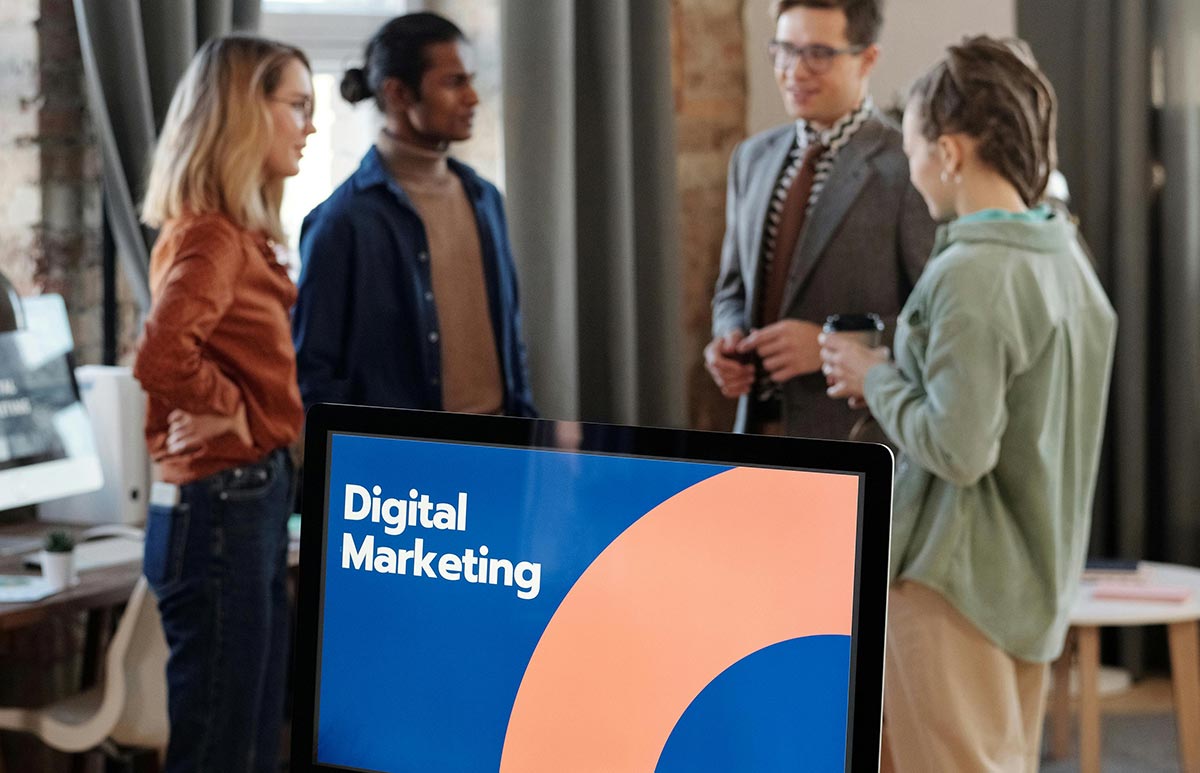
One constant part of managing a business is marketing: it’s a never-ending process. So, if you need a steady supply of social media posts, ad campaigns, and other visuals, you need to work with a reliable graphic design subscription service. Here are our top five:
1. Penji

Who doesn’t want unlimited graphic design for a fixed monthly fee? Penji offers plans with unlimited revisions, access to a team of design experts, fast turnaround times, and cost-effective pricing. This is the best option for business owners, marketers, agencies, and internal teams to get social media graphics, custom illustrations, logos, web and app designs, and many more.
2. Flocksy

Next, having a dedicated team of creatives without worrying about overhead expenses makes Flocksy an excellent design solution for marketers. Like Penji, it offers flat-rate pricing that’s predictable and suitable for businesses of all sizes. It provides graphic design services, video editing, motion graphics, and more.
3. Designity

Offering you the guidance of a US-based creative director, Designity is a graphic design service platform that’s ideal for modern businesses. It can provide you with a wide range of services, including motion graphics, videos, digital ads, social media graphics, and mobile app design and coding, among others.
4. ManyPixels

With a fast turnaround time for their unlimited design requests, ManyPixels is another reliable creative service platform for marketers. It provides ongoing support for your marketing efforts, including branding, illustrations, social media posts, print design, and video editing, to name a few.
5. Superside

Another creative-as-a-service platform, Superside, suits every size business and marketing team. It is ideal for those with high-volume design needs and a larger enterprise marketing network. You can get a wide array of graphic design services, including ad creatives, branding services, illustrations, and even eBooks and report designs.

Top 10 Video Marketing Agencies You Must Check Out in 2026
Casino mobile apps

The Top 8 Webinar Platforms For Your Next Virtual Event or Demo
Hash casino
Bizzo casino deposit bonus
Geheime casino tricks de erfahrung
Casino nikolsburg erfahrungen

Top 10 Presentation Software To Use in 2026

Top 10 Video Marketing Agencies You Must Check Out in 2026

Top 10 Social Media Scheduler Apps to Automate Your Postings

How Marketing Optimization Tools Level Up Your Marketing Game

The Top 8 Webinar Platforms For Your Next Virtual Event or Demo

What’s the Best Unlimited Graphic Design Subscription Platform?
Pinco Casino — a dominant platform throughout the 2025–2026 casino market in Canada
Trending
- Business7 hours ago
Top 10 Video Marketing Agencies You Must Check Out in 2026
- Technology9 hours ago
The Top 8 Webinar Platforms For Your Next Virtual Event or Demo
- Uncategorized4 days ago
BDMBet Sito web ufficiale 450 di bonus + 250 giri gratis
- cresuscasino3 days ago
Cadoola casino review
- azurcasino3 days ago
888 casino willkommensbonus
- Business2 days ago
What’s the Best Design Agency in Chicago
- cresuscasino2 days ago
Casino 400
- cresuscasino2 days ago
Casino chateaufarine
- leonbetcasino2 days ago
Doubledown casino free chips bonus collector
- leonbetcasino2 days ago
Essence geant casino annemasse

